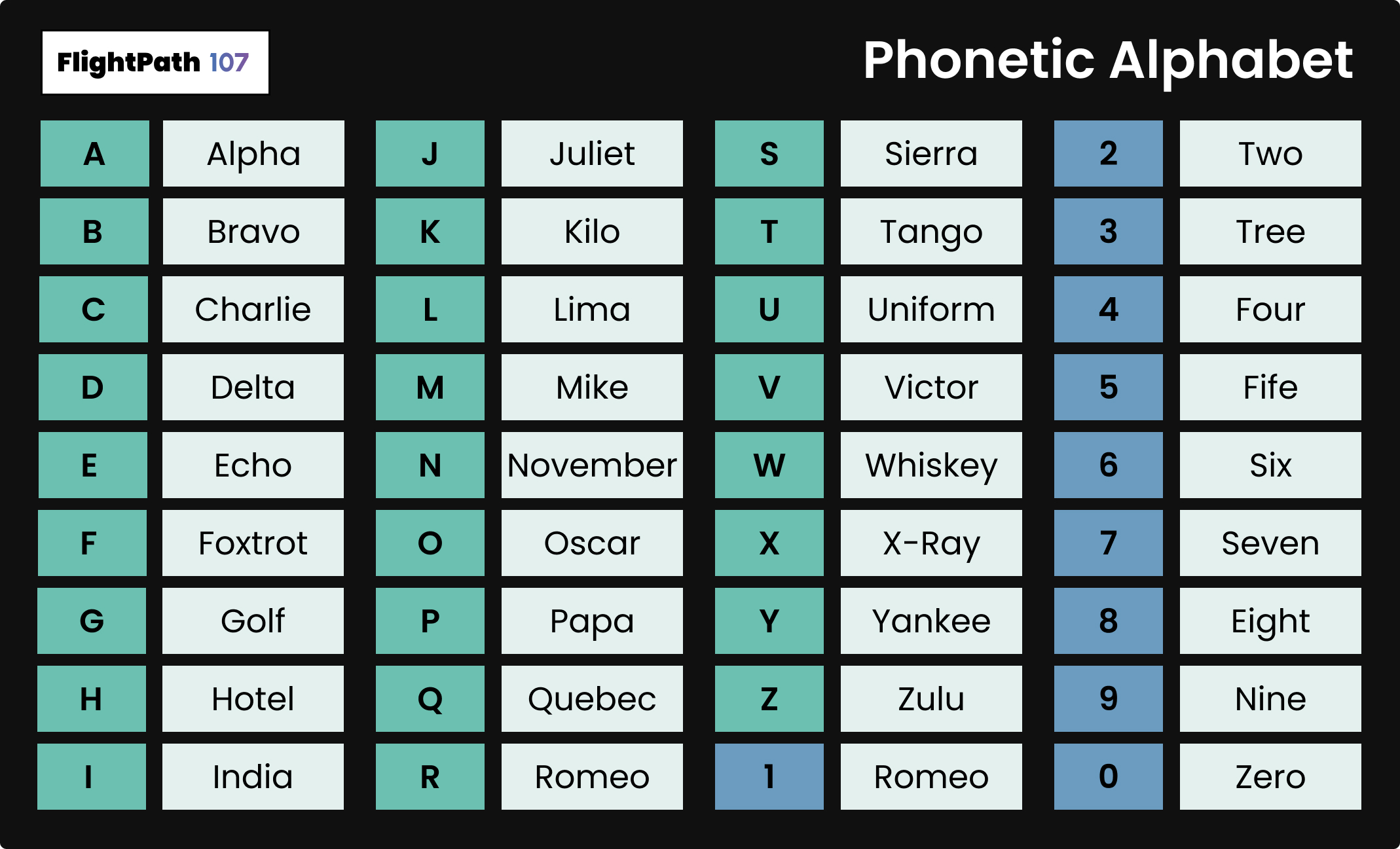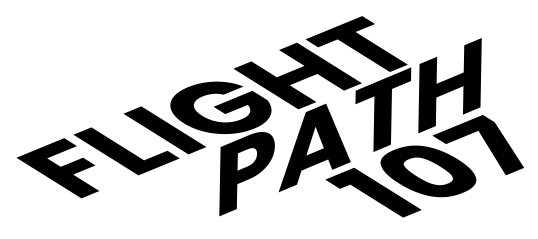Overview
Part 1: Call-In Formula
In this lesson, we’ll first walk you through the proper call-in structure for calling in to Air Traffic Control (ATC). You’ll learn the essential components you need to convey and how to convey them, like who you’re calling, who you are, where you are, and what you need.
Part 2: Phonetic Alphabet
Once you’ve got the structure down, we’ll focus on using the phonetic alphabet to clearly articulate your UA’s call sign and explain how to use phonetic numbers when providing important details like your altitude or location.
Introduction to Calling Into Official FAA Radio Channels
Clear and Concise
Using Proper Radio Etiquitte
In of aviation, especially for UAS pilots, clear and precise communication is essential.
Whether coordinating with air traffic control (ATC), other pilots, or even during routine drone flights, using standardized communication methods helps prevent miscommunication that can lead to accidents or errors.
One essential tool in this process is the phonetic alphabet, which provides clarity. This is especially vital in noisy environments or when signal quality is poor. The phonetic alphabet allows for every letter and number is understood without ambiguity.
How the Phonetic Alphabet System Works
The phonetic alphabet, including terms like “Alpha,” “Bravo,” and “Charlie,” is a system designed to eliminate confusion when spelling out words or call signs over the radio. For instance, ‘B’ is represented by “Bravo,” and ‘C’ is denoted by “Charlie.”
Communicating Numbers and Coordinates
Aside from letters, sUAS pilots often need to communicate numerical values—such as altitudes, headings, or frequencies—using standardized phrases. This helps avoid confusion when relaying data, allowing for communication to be clearly understood by everyone involved, particularly in complex or time-sensitive operations.
Radio Etiquette and Active Listening
Knowing how to properly initiate and terminate communications is just as important as using the correct terminology. Active listening is equally essential for sUAS pilots in order to comprehend instructions from ATC and other pilots.
How to Initiate and Terminate Radio Communications
This involves knowing when to speak, how to address other stations or aircraft, and structuring your message effectively.
Starting with an example
If you’re calling air traffic control (ATC) using the phonetic alphabet for your DJI drone, your radio call might sound like this:
- Who you are calling:
- “Mammoth Tower” (or the name of the ATC or control tower you’re contacting)
- Who you are:
- “DJI Delta Juliet India Drone”
- Where you are:
- “500 feet AGL, 2 miles north of Nolan Lake”
- What you want:
- “Requesting permission to enter Class D airspace for aerial photography”
- Message end:
- “Over”
“Mammoth Tower, this is DJI Delta Juliet India Drone, 500 feet AGL, 2 miles north of Nolan Lake, requesting permission to enter Class D airspace for aerial photography, over.”
This format keeps your message clear and concise, following standard aviation radio protocols.
The Phonetic Alphabet:
A-Z / 1-9
Lesson Section Tagline intro if Applicable. Remove if nothing there.
Below is a table of the entire phonetic alphabet, including numbers, listing each letter and number along with its corresponding word.

Articulating Numbers in the Phonetic Alphabet
How to Structure Numbers in Aviation Radio
Introduction
In this part of the lesson, we’ll explore how to express numbers clearly in radio communication, breaking them down based on their magnitude.
We’ll cover how to structure numbers differently depending on their length—whether you’re dealing with 3-digit, 4-digit, or 5+ digit numbers.
3 Digit Numbers
When communicating numbers with three digits, each digit is spoken separately.
For example, any number below 1,000 feet is broken down into individual digits. Instead of saying “four hundred fifty-six,” you would say “FOUR, FIVE, SIX.” Similarly, 280 feet would be communicated as “TWO, EIGHT, ZERO” (not “two hundred eight zero” or “two hundred eighty” <- with 3 digit numbers it is always one individual digit at a time).
Other examples:
- 580 feet: “FIVE EIGHT ZERO”
- 270 feet “TWO SEVEN ZERO”
- 420 feet: “FOUR TWO ZERO”
- 768 feet: “SEVEN SIX EIGHT”
4 Digit Numbers
When communicating numbers in the thousands, pronounce the thousands first, followed by the hundreds.
- First, for state the individual digit separately for the thousand, followed by the term “THOUSAND.””
- Next, articulate the hundreds by stating the number of hundreds followed by the term “HUNDRED” if applicable.
- If the number also includes tens or units, state those values separately after the hundreds.
For example, 2,345 would be communicated as “TWO THOUSAND, THREE HUNDRED, FOUR FIVE.“
Other Examples:
- 1,000 feet = ONE THOUSAND
- 1,200 feet = ONE THOUSAND, TWO HUNDRED
- 1,250 feet = ONE THOUSAND, TWO HUNDRED FIFTY
- 7,200 feet = SEVEN THOUSAND, TWO HUNDRED FIFTY
5 Digit Numbers
- First, state each individual digit separately for the thousands, followed by the term “THOUSAND.”
- Next, articulate the hundreds and tens separately.
For example, 10,500 feet is communicated as “ONE ZERO THOUSAND FIVE HUNDRED,” while 12,800 feet would be “ONE TWO THOUSAND EIGHT HUNDRED.”
Other Examples:
- 10,000 feet: ONE ZERO THOUSAND
- 10,500 feet: ONE ZERO THOUSAND, FIVE HUNDRED
- 12,000 feet: ONE TWO THOUSAND
- 12,550: ONE TWO THOUSAND, FIVE HUNDRED, FIFTY
- 24,500 feet: TWO FOUR THOUSAND, FIVE HUNDRED
- 24,560 feet: TWO FOUR THOUSAND, FIVE HUNDRED, SIXTY
- 49,600 feet: FOUR NINE THOUSAND, SIX HUNDRED
- 49,650 feet = FOUR NINE THOUSAND, SIX HUNDRED FIFTY
Flash Cards
Hover over each box to reveal the answer on the other side.



